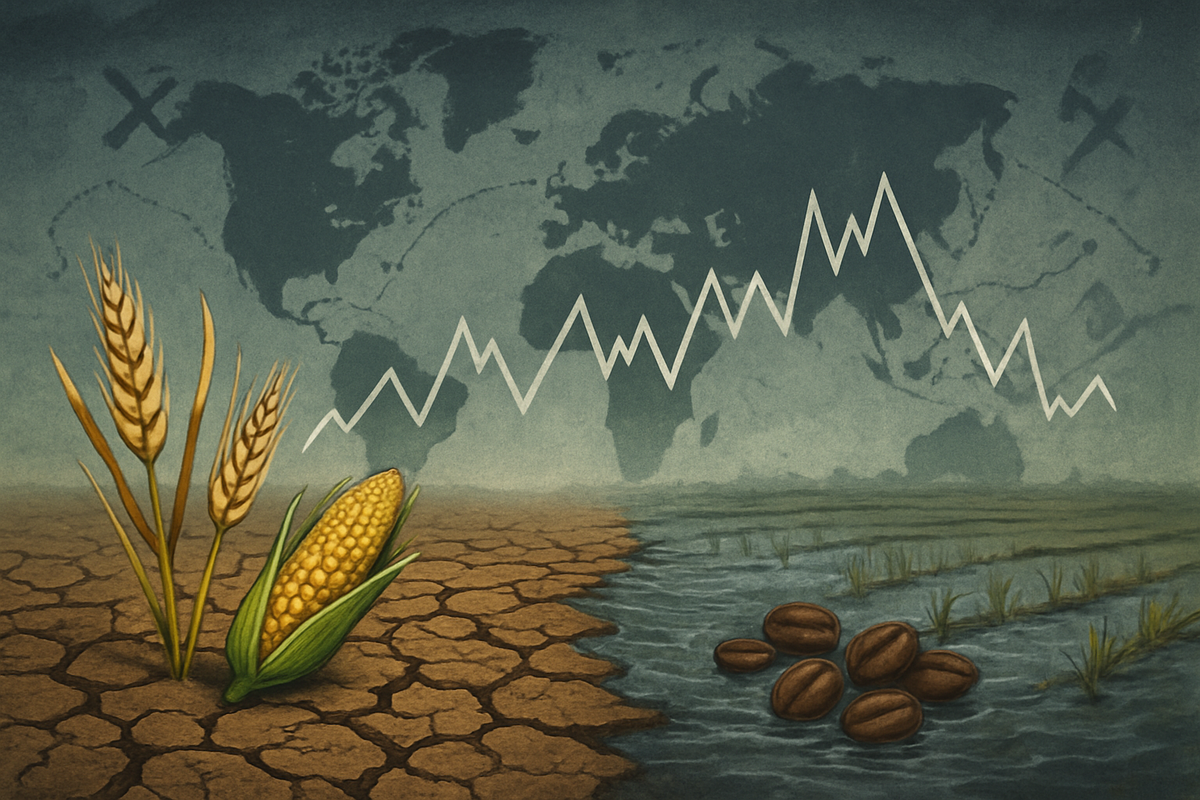Food stamps: US government says it will stop paying for food aid next week – BBC

Impact of US Government Shutdown on Sustainable Development Goals
Executive Summary
A US government shutdown has resulted in the suspension of the Supplemental Nutrition Assistance Program (SNAP), a critical food assistance initiative. This cessation of benefits, affecting over 40 million Americans, directly undermines progress toward key Sustainable Development Goals (SDGs), most notably SDG 2 (Zero Hunger) and SDG 1 (No Poverty). The political impasse and subsequent failure to fund this essential social safety net highlight significant challenges to achieving SDG 16 (Peace, Justice and Strong Institutions) and SDG 10 (Reduced Inequalities).
Analysis of the Supplemental Nutrition Assistance Program (SNAP) Suspension
Program Overview and Beneficiary Impact
- Scope: The program provides food assistance to over 40 million people, equivalent to one in eight Americans.
- Function: SNAP utilizes reloadable debit cards for the purchase of essential grocery items, forming a vital part of household budgets for low-income families.
- Benefit Level: An average family of four receives approximately $715 per month.
- Administration: While states administer the program, the majority of funding is federal. The suspension of federal funds places an unsustainable burden on state resources.
Governmental Impasse and Funding Issues
The U.S. Department of Agriculture announced that federal funds for the program would be exhausted by November due to the government shutdown. The core of the issue is a political dispute over the use of emergency funds.
- Contingency Fund Dispute: The administration declined to use a multi-year contingency fund, stating it was reserved for emergencies such as natural disasters. The Center on Budget and Policy Priorities noted this fund would only cover approximately 60% of one month’s benefits.
- Political Criticism: Democratic House members condemned the decision as “cruel and unlawful,” urging the Agriculture Secretary to release the reserves and transfer other available departmental funds to ensure benefits for November.
- State-Level Response: Several states have pledged to use their own funds to cover the shortfall but were warned by the federal government that they would not be reimbursed. Other states, such as Massachusetts, lack the financial capacity to cover the gap, leaving an estimated one million residents without benefits.
Direct Contradictions to Sustainable Development Goals (SDGs)
SDG 2: Zero Hunger
The suspension of SNAP is a direct assault on the goal of achieving Zero Hunger. By removing a primary mechanism for food security, the shutdown creates an immediate hunger crisis for millions.
- The policy directly increases food insecurity for the nation’s most vulnerable populations.
- It forces a greater reliance on charitable food pantries and emergency food services.
- The severity of the situation is underscored by actions such as California deploying its National Guard to assist with food distribution.
SDG 1: No Poverty
SNAP is a cornerstone of the social protection system in the United States, and its suspension actively works against the goal of eradicating poverty.
- The program functions as a critical safety net that prevents millions from falling deeper into poverty.
- The loss of this assistance removes a stable source of support for household budgets, increasing financial precarity and hardship.
SDG 10: Reduced Inequalities
The impact of the SNAP suspension is not distributed equally across society, thereby exacerbating existing inequalities.
- The shutdown disproportionately harms low-income families, children, the elderly, and people with disabilities who rely on the program.
- This policy failure deepens the economic divide and undermines efforts to create a more equitable society.
SDG 16: Peace, Justice and Strong Institutions
The government shutdown and its consequences represent a failure of effective, accountable, and inclusive institutions.
- The political deadlock demonstrates an inability of governmental institutions to perform their most basic functions, including providing for the welfare of citizens.
- The failure to fund an established, congressionally authorized program undermines public trust and the rule of law.
- The dispute over the use of contingency funds highlights a breakdown in institutional processes designed to protect vulnerable populations during crises.
SDGs Addressed in the Article
-
SDG 2: Zero Hunger
The article directly addresses SDG 2 by focusing on the suspension of the Supplemental Nutrition Assistance Program (Snap), a key food assistance program. The central issue is that “Food assistance used by more than 40 million Americans will not be distributed,” leading to a direct threat of hunger for a significant portion of the population.
-
SDG 1: No Poverty
The article connects to SDG 1 as Snap is a social protection program for low-income families. The text notes it is “used by one in every eight Americans, and plays a vital role in many grocery budgets.” The loss of this benefit exacerbates poverty for millions who rely on it to meet basic needs.
-
SDG 10: Reduced Inequalities
This goal is relevant because the suspension of Snap disproportionately affects the most vulnerable and low-income segments of the population. The article highlights a failure in a social protection policy intended to support these groups, thereby increasing economic inequality between them and the rest of the population.
Specific SDG Targets Identified
-
Target 2.1: End hunger and ensure access to food
This target aims to “ensure access by all people, in particular the poor and people in vulnerable situations… to safe, nutritious and sufficient food all year round.” The article’s main point—that over 40 million Americans are losing access to food assistance—is a direct contradiction to achieving this target.
-
Target 1.3: Implement social protection systems
This target calls for the implementation of “nationally appropriate social protection systems and measures for all… and achieve substantial coverage of the poor and the vulnerable.” Snap is a primary social protection system in the US. The government shutdown causing its suspension represents a failure to implement this system, leaving millions of vulnerable people without coverage.
-
Target 10.4: Adopt policies for greater equality
This target encourages countries to “Adopt policies, especially fiscal, wage and social protection policies, and progressively achieve greater equality.” The article discusses the political and fiscal impasse (the government shutdown) leading to the failure of a key social protection policy, which works directly against the goal of achieving greater equality.
Indicators for Measuring Progress
-
Number of people affected by food insecurity
The article provides a direct indicator by stating that food assistance for “more than 40 million Americans will not be distributed.” It also specifies that “one in every eight Americans” uses the program, and in a specific state like Massachusetts, “one million people are expected to lose benefits.” These numbers can be used to measure the scale of the population losing access to food.
-
Value of social protection benefits
An implied indicator is the monetary value of the assistance being lost. The article states, “A family of four on average receives $715 (£540) per month.” This figure quantifies the financial support being withdrawn from low-income families, serving as an indicator of the economic impact and the depth of the social protection failure.
Summary Table: SDGs, Targets, and Indicators
| SDGs | Targets | Indicators |
|---|---|---|
| SDG 2: Zero Hunger | Target 2.1: By 2030, end hunger and ensure access by all people, in particular the poor and people in vulnerable situations, to safe, nutritious and sufficient food all year round. | The number of people losing access to food assistance, specified as “more than 40 million Americans.” |
| SDG 1: No Poverty | Target 1.3: Implement nationally appropriate social protection systems and measures for all, including floors, and by 2030 achieve substantial coverage of the poor and the vulnerable. | The number of beneficiaries losing coverage from a key social protection system (over 40 million). |
| SDG 10: Reduced Inequalities | Target 10.4: Adopt policies, especially fiscal, wage and social protection policies, and progressively achieve greater equality. | The monetary value of the social protection benefit being withdrawn from vulnerable populations, stated as “$715 per month” for a family of four. |
Source: bbc.com
What is Your Reaction?
 Like
0
Like
0
 Dislike
0
Dislike
0
 Love
0
Love
0
 Funny
0
Funny
0
 Angry
0
Angry
0
 Sad
0
Sad
0
 Wow
0
Wow
0
















































:focal(1500,1000)/https://media.globalcitizen.org/a6/9a/a69a4720-d8a1-4715-b596-18738d03c05c/rotary_polio_hero_image.jpg?#)







/countries/sri-lanka/photo-credit---dmc-sri-lanka.tmb-1200v.jpg?sfvrsn=dc298bcc_1#)


















